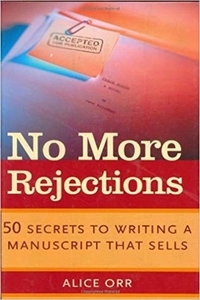
Every Now and Then the Idea Well Runs Dry. That's what
it can feel like anyway. And it is likely to give a writer what, where I come from,
they used to call a conniption fit. Not to worry. As Anne Lamott says, "Help
is on the way. One hundred percent of the time."
Get Out Your Writer's Journal. Remember the Writer's Journal?
I talked about in my last column, "Your Life as Idea Central." A notebook
that is special in some way for you personally. If you don't have one, get one.
If you have one, open it up. Either way, prepare to be gifted with help ala Alice.
Read Through the Following Story Idea Kickstarts. Do so
quickly. It's a gut reaction you're after, not a head one. Pick the possibility
that strikes you hardest. Maybe because you'd love to write it. Maybe because you
dread writing it. Either way, your gut is engaged. Your imagination is sure to follow.
Here we go. Five Story Kickstarts.
You have a particular fear. What would happen if that
fear materialized? For example, what if those brakes you've been meaning to repair
on your car gave out? Think of all the possible consequences of that occurrence.
Make the absolute worst of those consequences into a story situation or a scene
for a novel.
Make a list of people who frequent a place with which you are
familiar. Your neighborhood laundromat, your favorite deli or diner, the place you
most enjoy stopping for a cocktail or a beer or a diet soda. Choose the three most
intriguing, or potentially most intriguing, of those people. Imagine past histories
for them and present circumstances. Go way beyond what you actually know about them.
Specifically, give each of them a serious life problem they are struggling with,
and write how those pressures cause them to interact in a story or a scene set in
this place.
Choose a favorite, or better still, a least favorite relative.
Recall an incident from that person's life, or create an incident that could have
happened to that person. Choose a situation that puts this person in extreme conflict,
maybe even life versus death. Build a scene or story around this person, that incident,
and what happens to her or to him.
Think of a close relationship you envy. A family relationship,
or a romantic one, or a friendship. (The envy lends emotional intensity on your
part.) Imagine a situation that alienates these individuals from each another, maybe
causes them to hate one another, or even makes one want to kill the other. Build
a story, or the beginning chapter of a story, around what happens. Maybe make yourself
a character in that story.
Go through photographs of people and scenes. Choose two
photos. Imagine a connection between them, and build a story or scene around that
connection. Make sure there is something disturbing or unsettling or even dangerous
involved in the way these people and scenes connect. Make that threatening element
the heart of your story.
If You are Using Real-life People or Situations, Change the
Details. The names, the physical descriptions, anything else that would make
these folks recognizable to themselves or each other. In other words, fictionalize
everything, for your own safety. Never forget we are an extremely litigious society,
and this story or scene might get published someday.
Consider Yourself Kickstarted. Don't worry. It won't leave
a bruise. But it could lead to an injection of imagination juice straight into your
psyche. Now, there's one thing left for you to do. JUST WRITE!!
For more insights into writing and publishing – Visit my blog
at www.aliceorrbooks.com.
About Alice Orr
Alice Orr is author of 16 novels, 3 novellas, a memoir and No
More Rejections: 50 Secrets to Writing a Manuscript that Sells. Hero in the Mirror:
How to Write Your Best Story of You is in progress. A former book editor and literary
agent, Alice now writes full-time. Her latest novel is A Time of Fear and Loving
– Riverton Road Romantic Suspense Series Book 5. Find all of Alice Orr's books on
Amazon. Alice has two
grown children and two perfect grandchildren and lives with her beloved husband
Jonathan in New York City.
Author Website www.aliceorrbooks.com
Author Blog www.aliceorrbooks.com
Facebook https://www.facebook.com/aliceorrwriter
Twitter https://twitter.com/aliceorrbooks
Amazon Author Page https://www.amazon.com/Alice-Orr/e/B000APC22E



